
| Specifications |
| Publisher: Primus Books, Delhi | |
| Author LAUREN M. BAUSCH | |
| Language: English | |
| Pages: 260 | |
| Cover: HARDCOVER | |
| 9.50 X 6.50 inch | |
| Weight 400 gm | |
| Edition: 2019 | |
| ISBN: 9789352903443 | |
| NAP978 |
| Delivery and Return Policies |
| Usually ships in 7 days | |
| Returns and Exchanges accepted within 7 days | |
| Free Delivery |
The eleven articles in this volume mark a significant advance in Vedic studies. Contributions range widely across critical topics in early, middle, and late Vedic texts and their commentaries, as well as classical themes in contemporary Sanskrit literature. Essays elucidate the explanations and arguments found in Brahmana texts, the historical and ecological development of Vedic ritual, concepts and underlying messages in Vedic texts, anachronisms in commentarial exegesis, and literary devices in narrative. From a variety of philological, philosophical, ritual, gender, and literary approaches, these articles shed new light on our understanding of these seminal texts of Indian religion and philosophy.
This book is dedicated to the life and work of Professor Ganesh Umakant Thite.
Lauren M. Bausch is Assistant Professor at Dharma Realm Buddhist University. A specialist in Brahmana texts and early Indian Buddhism, she is currently writing a book about the Vedic philosophy of language and causality. Bausch has contributed the following articles to important books/journals: 'The Kanva Brahmanas and Buddhists in Kosala'; 'Pratistna in the Brahmanas and Aranyakas'; 'Surya Reliefs in Early Buddhist Art'; and 'Dual Varna in Vedic Texts'.
To honor Professor G.D. Thite's work on Brahmana texts, a one-day conference was held at the University of California at Berkeley on 24 September 2016 titled 'Self, Sacrifice, and Cosmos: Late Vedic Thought, Ritual, and Philosophy-A Conference in Honor of Dr Ganesh Umakant Thite's Contribution to Vedic Studies'. In celebrating Professor Thite's legacy, the conference aimed to advance the study of the intermediate Vedic texts as key sources of the often esoteric, but deeply formative concepts and doctrines of the late Vedic corpus. While the Brahmanas are often neglected by scholars in favor of the earlier Samhitas and later Upanisads, they are seminal in the formation of some of the most critical concepts, practices, and mythologies of later, classical Hinduism. The Brahmanas and Aranyakas constitute an intricate register of philosophical concepts that connects to ritual practice and is invaluable for understanding Vedic thought. Accordingly, the conference sought to continue the direction taken by Professor Thite to unpack religious and philosophical meaning from primary Vedic sources rich in metaphorical rhetoric.
The conference was made possible through generous support from the Catherine and William L. Magistretti Chair in South and Southeast Asian Studies at the University of California at Berkeley; Dharma Realm Buddhist University; the Townsend Center for the Humanities; the Institute for South Asian Studies; the Indian Council for Cultural Relations; and the Consulate General of India in San Francisco. In addition, the tireless efforts of Robert Goldman, Sally Sutherland Goldman, and Kristi Wiley were indispensable in planning and hosting this public forum on Vedic studies. Stan Shoptaugh designed the program.
Conference participants highlighted the impressive range of current scholarship, as well as research that is still a desideratum, in reading and contextualizing intermediate and late Vedic texts. These scholars-many of whom have studied under or collaborated with Professor Thite-addressed ritual, philosophical, philological, sociological, gender, and ecological issues in the texts, focusing primarily on the Brahmanas. With the goal of encouraging more scholars across disciplines to take a closer look at the Brahmanas and Aranyakas, speakers shared ideas spanning the development of Vedic ritual to Brahmanical argument and philosophy. In the spirit of Professor Thite, many talks re-examined preconceptions in the field of Vedic studies and attested to the distinctive features of middle Vedic thought, offering nuanced perspectives on the diversity and growth of Vedic religion and demonstrating the potential scope and merit of the field. Nine of the ten talks given on the occasion of the conference are published in this volume, with two additional papers by scholars who could not attend.
This collection is organized thematically, following a brief biography of Professor Thite. Timothy Lubin and Joanna Jurewicz examine how to approach the ritual explanations and arguments found in Brahmana texts, and illustrate how to read the sophisticated ideas presented in this genre. Thite and Stephanie W Jamison explore the development of Vedic ritual, while Joel P. Brereton and I focus on specific concepts in Vedic texts. Jarrod Whitaker and Caley C. Smith show how a close reading of Vedic hymns and narratives taken together with parallel passages in other texts illuminates the inconspicuous, but intentional, messages embedded therein. Goldman and Jan E.M. Houben address variations in Vedic practice, Goldman from the perspective of Sankaracarya interpreting social practices in a late Vedic text, and Houben from the impact of ecological shifts on Vedic ritual systems. Laurie Patton looks at the way dialogue marks individual transformation and personality development.
In Brahmana as Commentary', Lubin looks afresh at the Brahmanas as commentary, cogently demonstrating that the word or mantra glossed is usually considered 'in the context of its position and function in the liturgy as opposed to the context of the surrounding text in the Samhita'. The fact that the earliest expository prose compositions in Sanskrit came to be treated as sruti (Vedic revelation)-and thus as 'primary text' rather than 'secondary text'- should not obscure the fact that in form and original purpose they are, at least to a large extent, commentaries on the mantras of the Vedic tradition. In considering the Vedic Brahmana genre as a species of commentary, his essay outlines its particular purposes, methods, and conception of the object of analysis. Lubin also compares Brahmana strategies with later forms of commentary, suggesting some ways in which the Brahmanas provided an influential first model of arthaviida and introduced techniques used in later forms of commentary.
In 'The Consistency of Vedic Argument', Jurewicz analyzes two passages from the Satapatha Brahmana (2.2.4) and the Jaiminiya Brahmana (1.1-2) that treat the Agnihotra and Agnyadhana rituals. Employing conceptual metonymy and conceptual metaphor from cognitive linguistics, she delineates the bandhus (conceptual links) at work in these passages on both a ritual plane and a cosmogonic one. In this way, Jurewicz sheds light on how ritual activity reenacts cosmic processes and the creation of the human self by drawing connections between agni and prana, the sacrifice and Prajapati, the oblation and both food and svar, maintaining the fires with oblations and creating the immortal self, etc. Ultimately, the oblation cooked on the garhapatya fire is believed to be the part of the sacrifice to be offered into the ahavaniya fire, where it develops into his immortal self. Her account of Vedic theory at play in the ritual evinces a rational and coherent Vedic argument constructed across sakhas (schools) through a network of culturally specific conceptual connections.
In 'The Role of Brahmana-texts in the Development of Vedic Ritual', Thite outlines the historical conditions for Vedic scholarship in the West. His review of the genealogy of the field of Brahmana literature illustrates why, to date, these texts have been little studied compared to the Rgveda, Grhyasutras, or Upanisads. Having established a chronology for the study of these texts, Thite emphasizes that the Brahmana texts impart mythology and philosophy in a ritual context. After explaining that these texts describe the origin and growth of the sacrifice, he then sets out to correct a number of modern misunderstandings about the Brahmana texts and ritual offering.
In 'Vedic Ritual: The Sacralization of the Mundane and the Domestication of the Sacred', Jamison investigates unexamined preconceptions regarding the historical relationship between srauta (solemn) and grhya (domestic) ritual systems. Dismissing J.C. Heesterman's theory of unending conflict among sacrifices, her essay outlines the development of ritual from Vedic prehistory to the eventual split between the three-fire and one-fire models. By means of bandhus (statements of equivalence), the Brahmana texts placed more simple rituals on par with more elaborate ones, allowed the substitution of a part for the whole, and equated sacrificial implements with other objects, such as the sacrificer and the Vedas. These bandhus laid the foundation for duplication and equation across ritual systems, which, along with the paramount emphasis placed on ya evam veda (he who knows thus), enabled the everyday to become socialized and the sacred to become domesticated. The bandhus were then used to reconnect the two bifurcated systems that were originally united.
**Book's Contents and Sample Pages**
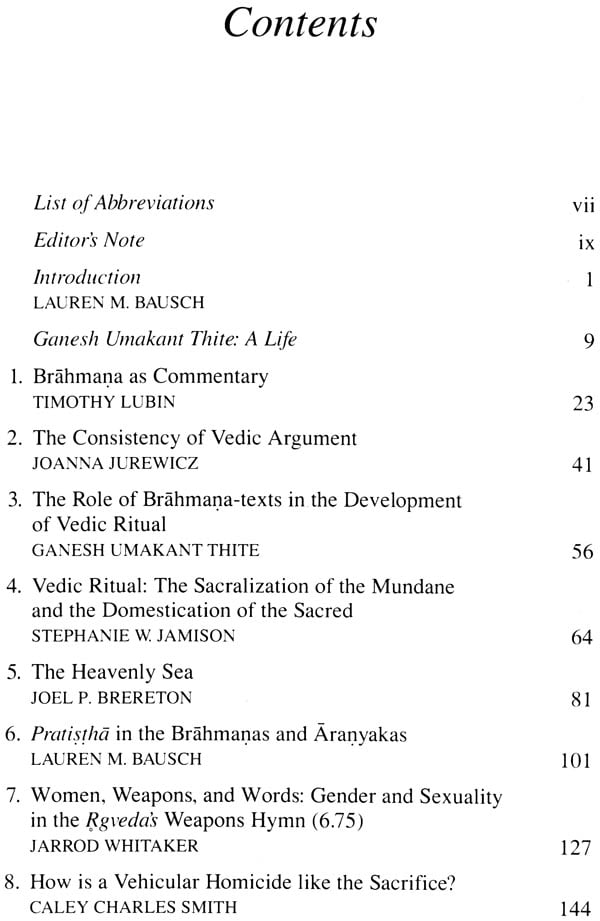

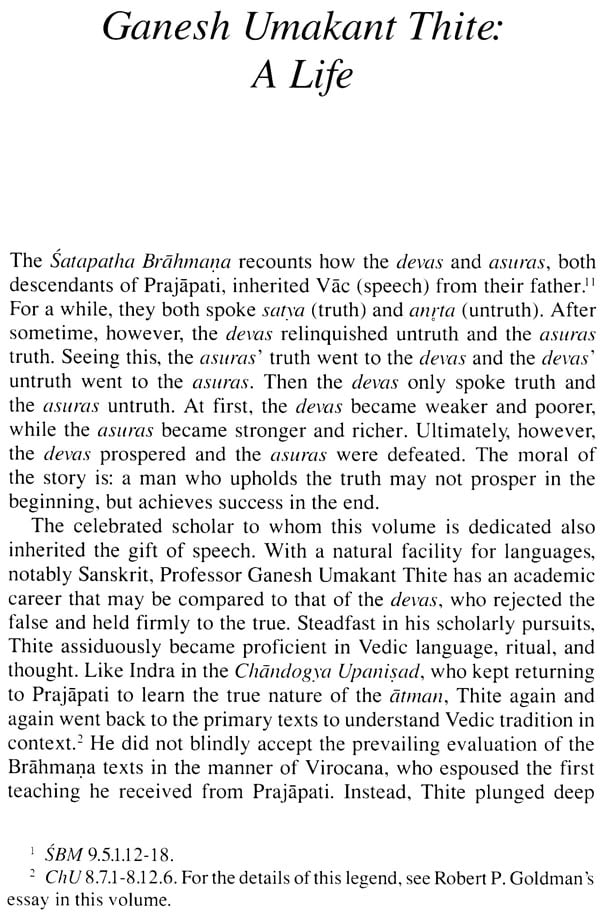
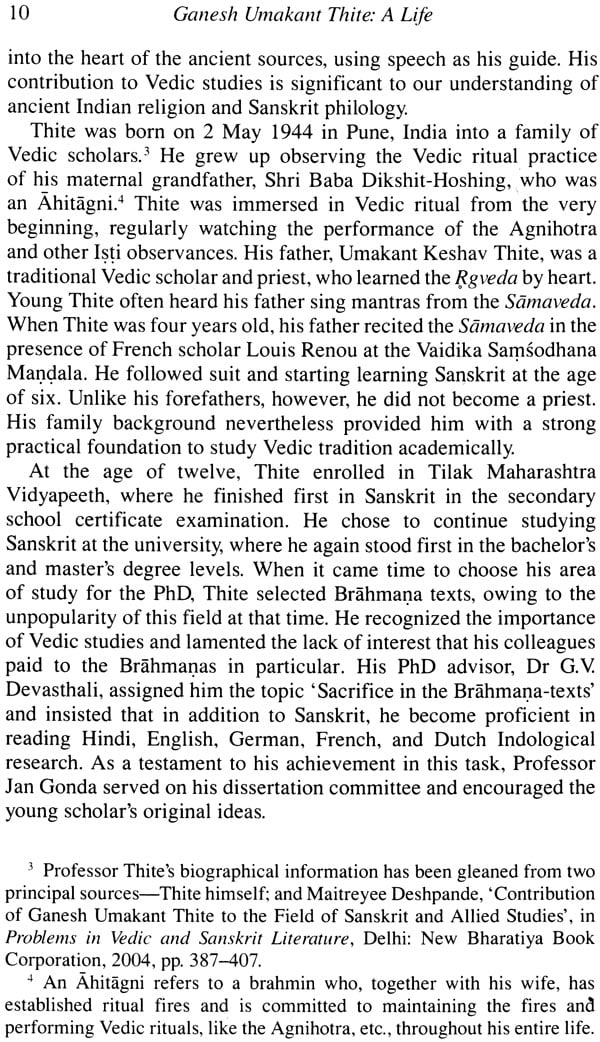
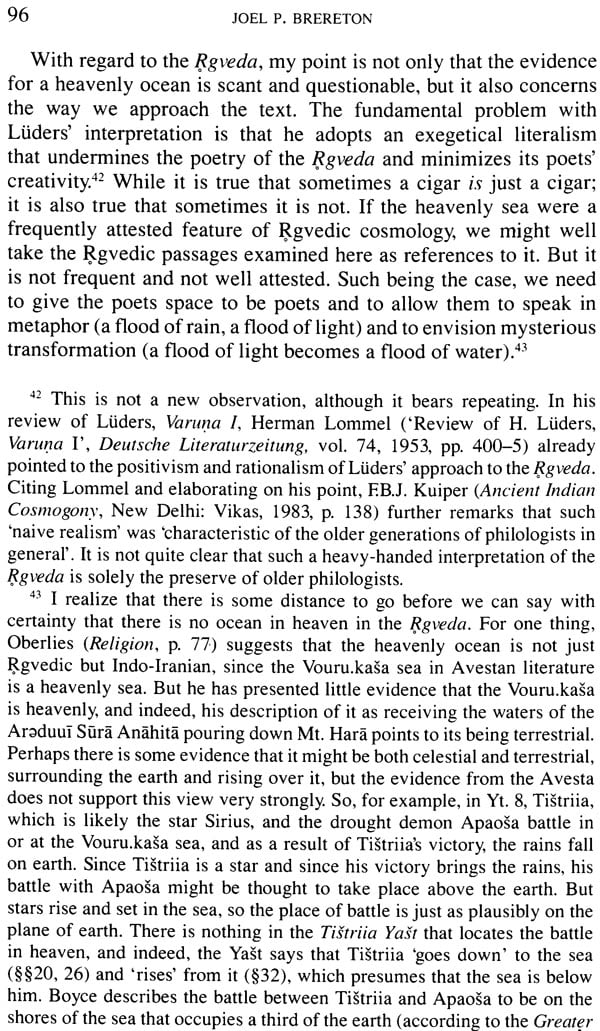
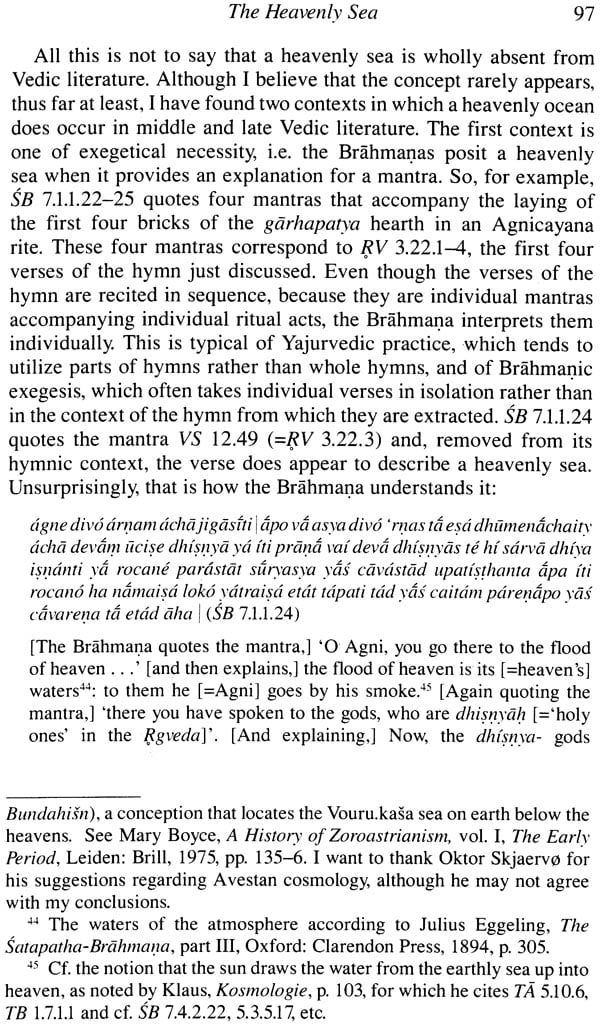
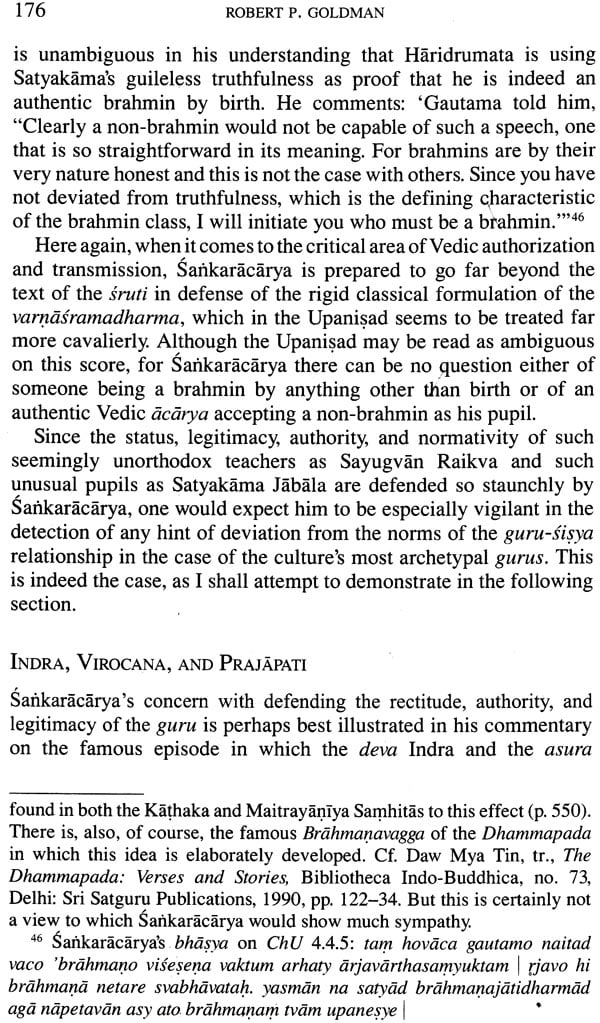

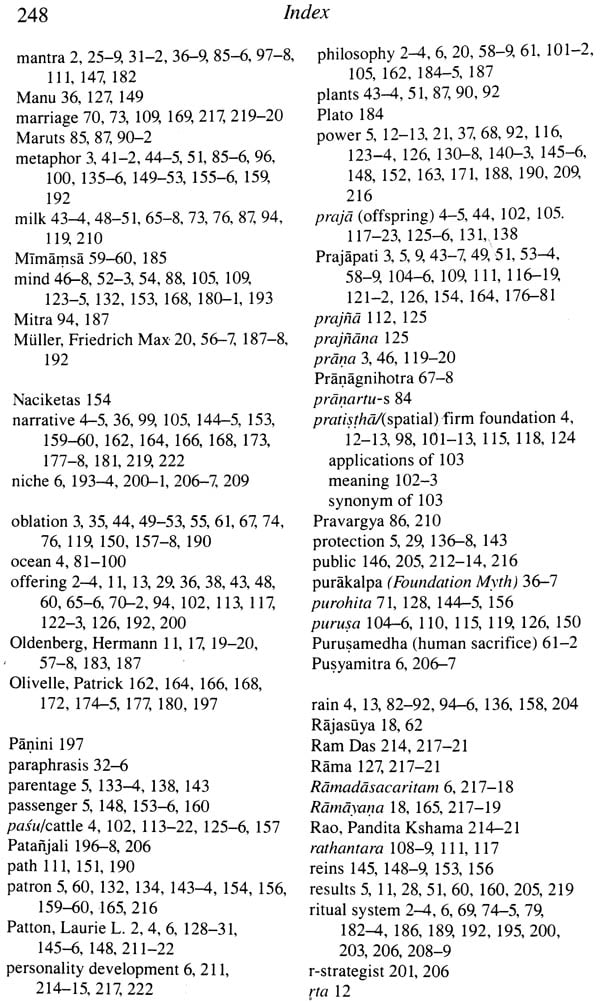
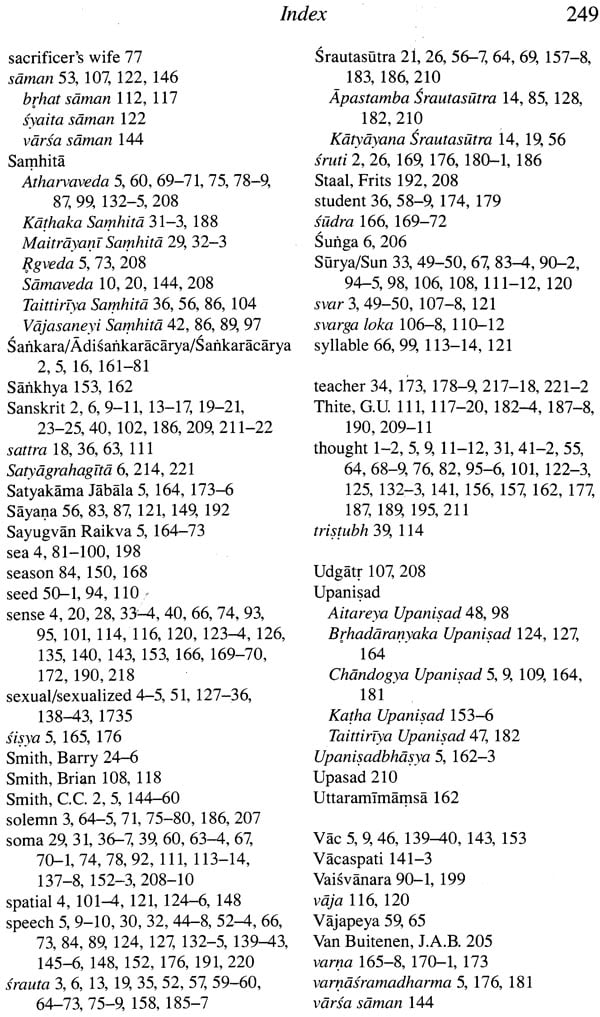
Send as free online greeting card
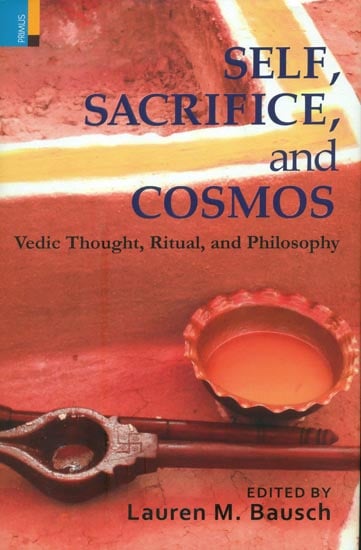
Visual Search